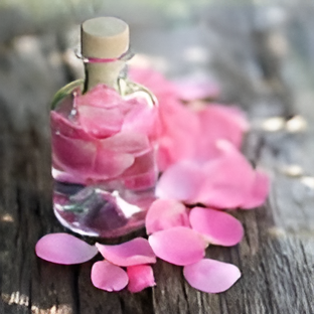Floral Waters: An In-Depth Exploration

Introduction to Floral Waters
Floral waters, also known as hydrosols or flower waters, are aromatic by-products of the steam distillation process used to extract essential oils from plants. While essential oils are highly concentrated and often used in aromatherapy, floral waters offer a gentler, more versatile alternative. They capture the essence of the flowers, maintaining their aroma and therapeutic properties while being diluted with water, making them safe for various applications.
The Process of Creating Floral Waters
The production of floral waters begins with the distillation of fresh flowers. During this process, steam passes through the plant material, extracting volatile oils and other compounds. Once cooled, the steam condenses into water, resulting in two distinct products: essential oil and floral water. The floral water contains the water-soluble components of the plant, which include aromatic compounds, minerals, and trace elements.
Common Types of Floral Waters
- Rose Water: One of the most popular floral waters, rose water is celebrated for its soothing and hydrating properties. It’s often used in skincare products for its ability to balance pH, reduce redness, and provide a refreshing aroma.
- Lavender Water: Known for its calming effects, lavender water is widely used in aromatherapy. It can support relaxation, reduce tension, and enhance the quality of sleep. Additionally, it’s beneficial for skincare, particularly for its anti-inflammatory properties.
- Orange Blossom Water: Extracted from the blossoms of the bitter orange tree, this floral water has a sweet, uplifting scent. It is often used in culinary applications, especially in Mediterranean and Middle Eastern cuisines, as well as in skincare for its toning and brightening effects.
- Chamomile Water: Chamomile floral water is known for its gentle, soothing properties. It’s particularly beneficial for sensitive skin and can be used to calm irritation and redness.
- Hibiscus Water: This vibrant floral water is rich in antioxidants and vitamins, making it a popular choice for skincare. It helps to hydrate and firm the skin, while also providing a lovely, tart aroma.
Benefits of Using Floral Waters
Floral waters are incredibly versatile and offer a range of benefits:
- Skincare: They can be used as facial toners, mists, or in formulations for creams and lotions. All skin types, including sensitive skin, can use them because of their soft nature.
- Aromatherapy: Floral waters can be diffused in the air or added to bathwater for their calming and uplifting effects. They create a soothing atmosphere that can enhance relaxation and emotional well-being.
- Culinary Uses: Many floral waters are edible and can be incorporated into beverages, desserts, and savory dishes. They add unique flavors and fragrances that can elevate culinary creations.
- Household Use: Floral waters can also be used as natural air fresheners or in cleaning products. Their pleasant scents can help create a refreshing environment in the home.
How to Use Floral Waters
- Facial Mist: Simply spray floral water on your face throughout the day for a refreshing boost of hydration. This is particularly helpful after working out or in hot weather.
- Toner: Apply floral water to a cotton pad and gently swipe it across your face after cleansing. This can help remove any remaining impurities while providing a burst of hydration.
- Bath Soak: Add floral water to your bath for a luxurious experience. It can help enhance relaxation and improve your mood.
- Culinary Applications: Use floral water in recipes, such as in desserts or drinks. A few drops can transform a simple dish into an aromatic experience.
- In Diffusers: Mix floral water with essential oils and use it in a diffuser for a delightful scent in your home.
Choosing Quality Floral Waters
When selecting floral waters, it’s essential to look for high-quality, pure products. Here are a few tips:
- Check for Purity: Ensure the floral water is 100% pure and free from additives or synthetic fragrances. Organic options are often preferable.
- Look for Transparency: Reputable brands will provide information about their sourcing and production methods, ensuring transparency about the quality of their products.
- Storage: Floral waters should be stored in a cool, dark place, preferably in dark glass bottles, to preserve their aromatic and therapeutic properties.
DIY Floral Waters at Home
Creating your own floral waters at home can be a rewarding experience. Here’s a simple method to make floral water using fresh flowers:
- Gather Fresh Flowers: Choose aromatic flowers like roses, lavender, or chamomile. Make sure they are devoid of pollutants and pesticides.
- Steam Distillation Method: Place the flowers in a heat-resistant bowl and cover them with distilled water. Place the bowl in a pot, add water to the pot, and heat it gently. As the steam rises, it will carry the essential oils, condensing them back into the bowl.
- Cool and Store: Once the distillation process is complete, allow the mixture to cool. Strain the liquid into a clean, sterilized bottle and store it in the refrigerator for freshness.
Conclusion
Floral waters are a wonderful addition to your wellness routine, offering a myriad of benefits for skincare, aromatherapy, and culinary adventures. Their versatility and gentle nature make them suitable for anyone looking to enhance their daily rituals with natural beauty and fragrance. Whether you choose to buy high-quality floral waters or create your own at home, incorporating these delightful essences into your life can lead to a more refreshing and aromatic experience. Embrace the beauty of floral waters and discover the myriad ways they can uplift your mind, body, and spirit.